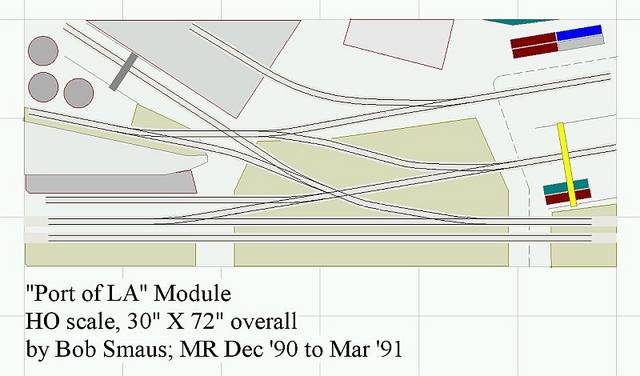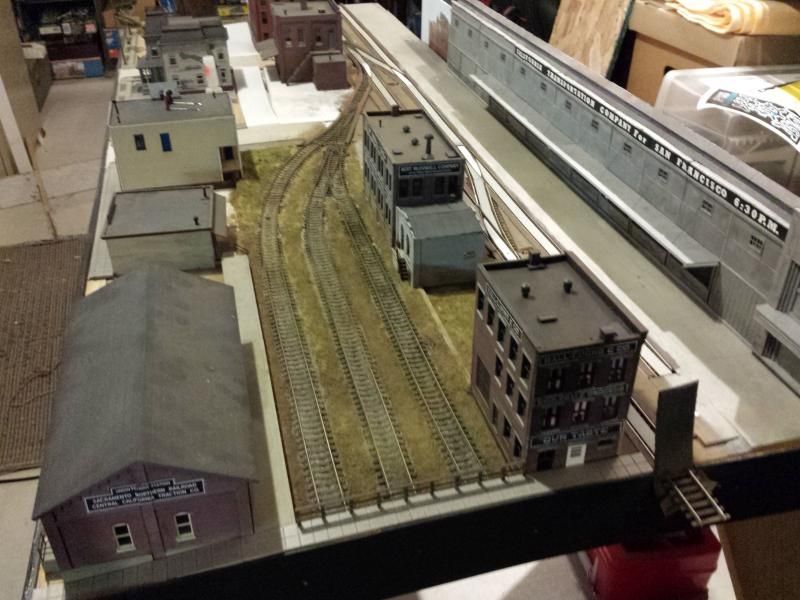Ok as some of you might know I have been looking for info for building my first layout and other info j should know about the hobby as I am a beginner. For my layout I will be making it 2’ wide by 6’ in length. I’m in need of some ideas for pro typical use of this type layout. Also track plans would be very helpful. Open to any ideas!!!
Is this N scale? Still, it’s a rather small space, and probably best suited to a switching industrial complex. The secret is to not try to jam as much track into a space as possible, but make it interesting and challenging. I believe both Atlas and Kato have examples of different types of track plans on their sites. There was at least one competition here maybe six years ago if you do a search for layout design competition.
My best tip? Go slow. Read lots, ask lots of questions, seek clarification rather than scratch your head and feel a bit embarrassed or lost, and feel free to post a couple of your track plans here for criticism. Expect to learn lots if you work with those offering feedback or challenges to your conceptualization.
Go slow. You want the first one to be at least 80% “right.”
-Crandell
No I would like to model HO scale and have engines with sound. The switching layout would be very cool but still don’t quite understand how a real switching yard works. Also I would like to be able to have some sd70/90’s and locos alike in pro typical use on the layout and possibly a steam engine or two. I know it’s asking for a lot but hopefully I’ll find a way to make it work.
The January 2015 issue of MR will have coverage of their project railroad, which is an N scale layout on a 3’x7’ board. Your space is a bit smaller than that, but the ideas presented in that uncoming series will probably be useful. The project railroad is Burlington; but you can adapt the ideas to just about any prototype railroad. If you want a scale larger than N scale, then forget about anything with a continuous run in that space. For HO scale, a point to point switching module is the likely choice.
Tom
Further to Toms reply, if I was new to the hobby and into N, I’d certainly be looking closely at the Red Oak Route build.
http://mrr.trains.com/videos/project-layouts/2014/11/video-building-the-3-x-7-red-oak-model-railroad
I know that you mention 2’x6’ but I’d suggest that you negotiate, nicely, with the “Chairman of the Board” for the 3’x7’ required.
Cheers, the Bear.[:)]
I can only second what the previous posts stated. A width of only 2 ft. will allow you to use only the minimum raduis of less than 10", limiting the rolling stock you can run on your layout to 40 ft. cars and 4-axle Diesels. Forget steam locos.
If you can get a little more real estate, you could build a layout which follows the 2010 MR project layout - “The Milwaukee Beer Line”. I have adapted the design of this HO project for N scale:

I am right now building a 2 by 6 N scale display layout, following German prototype. It is meant to be a stage for my trains, thus operation is limited to letting a few trains “circle the loop”. If you are into operations US-style, this won´t be satisfying. The track plan is similar to this one, the layout being shorter by about 4" than the below plan.

Some questions need answering by you, before we can really be of help! First what scale are you thinking? Z, N and HO would be possible with the size space you have available, although HO would probably need to be a switching layout.
People have made good suggestions without knowing the scale you intend to build in and without knowing this, it is pretty difficult to help you!
However, being from the older generation, I would suggest several books could help you make a decision on what scale to work in. Go to the “Shop” link above in the black strip and look through the books available. Kalmbach, the publishers of Model Railroader Magazine and the owners of this website have published many, many great books on just starting out and I’m sure you could find one that “Fits the bill”!
Usually I would agree but,a 2’x6’ is not a standard size layout and usually when found is chuck full of track or a do nothing loop type layout.
A well designed 30" x 72" or a 36" by 72" hollow core door layout would be the better choice.
Nringleman has posted in other threads specifying he wants to model in HO and likes large, modern diesels. This presents a problem in 2x6 feet–that amount of space is limited to a small switching layout, and a large diesel locomotive is kind of unwieldy for switching, but at least there isn’t a need for sharp curves that the big loco can’t handle.
Nringleman: If you have a small space, you can make the most of it by using smaller locomotives or a smaller scale. A “switching” layout is based on assembling and disassembling trains, spotting cars at industries–the end result of what trains are supposed to do. European modelers are traditionally more limited for space, and students with limited space and funds can follow their example. I recommend taking a look at micro layouts–here is a link to the Micro Layout Design Gallery, originally created by Carl Arendt, and maintained after his death by fans of his work:
http://www.carendt.com/micro-layout-design-gallery/
Even if you don’t end up using a plan from this site, it will be enough to get your creative juices flowing. The nice thing about a shelf layout is that they can be very narrow and unobtrusive: by building the industries etc. as background flats instead of 3-dimensional buildings (or they can just be pictures of buildings printed on an inkjet printer!) you can focus on the track itself and fit a lot of action into a space maybe a foot deep.
But to give you an idea of what you can do in 2x6 feet, here is a module from my own layout:
This is a section of a larger layout, but it is designed to function independently of the rest of the layout. As you will note, it consists of a runa
Now that Jetrock, through careful observation, has said you “like” large modern HO sound equipped locomotives, yet only have such a restricted space, I would suggest that you have a look here, not knowing which part of the planet you occupy, you may get lucky and find a group near you.
http://www.free-mo.org/
Cheers, the Bear.
A space of 2 by 6 ft. certainly is not a lot of real estate for a HO layout. It can´t be much more than a rather simple switching puzzle, like an inglenook and the like.
MR ran a series on building a small layout called the “Port of LA” layout by Bob Smaus. It was featured in the Dec. 1990 up to the March 1991 issue of MR. A nice looking layout on a 30" by 72" benchwork. It would need some sort of detachable cassette staging on either end to enhance operation.

Indeed,yet most small switching layouts is designed as a (cough,cough) as time saver or its cousin the inglenook.
A one large industry 2’x6’ switching layout could keep the operator busy for a hour.
Planning, Designing and Making Railway Layouts in a Small Space is about small layouts in Britain.
One of many ideas it discusses is a layout the fits into a chest of draws when not in use. The draws are pulled out and assembled modular style during operation. One draw sits on top of the chest, the other draws attach to one another and have fold-down legs. The 2nd and 3rd draw attach to the end of the draw on top, but additional draws can form L-shaped layouts.
The minimum radius for an HO scale loop is 18 inches. You also need 2 inches to clear the edge of the table on each side. So the width of the smallest HO scale layout would be 40 inches wide. 18 inch radius would only handle small 4 axle type locomotives. Small beginners HO layouts are typically built on a 4 ft by 8 ft platform.
I have a larger HO layout that has 18 in radius curves in some places, so I run 4 axle locomotives with sound and the layout runs well and sounds good.
Thanks for the replies everybody. I’m aware that this will not be a continuos layout and I’m ok with. Like previously mentioned by BRAKIE a switching layout would be able to keep me occupied for more than an hour. Also I live in Colorado and would like to join one of our local clubs to run longer trains there.
